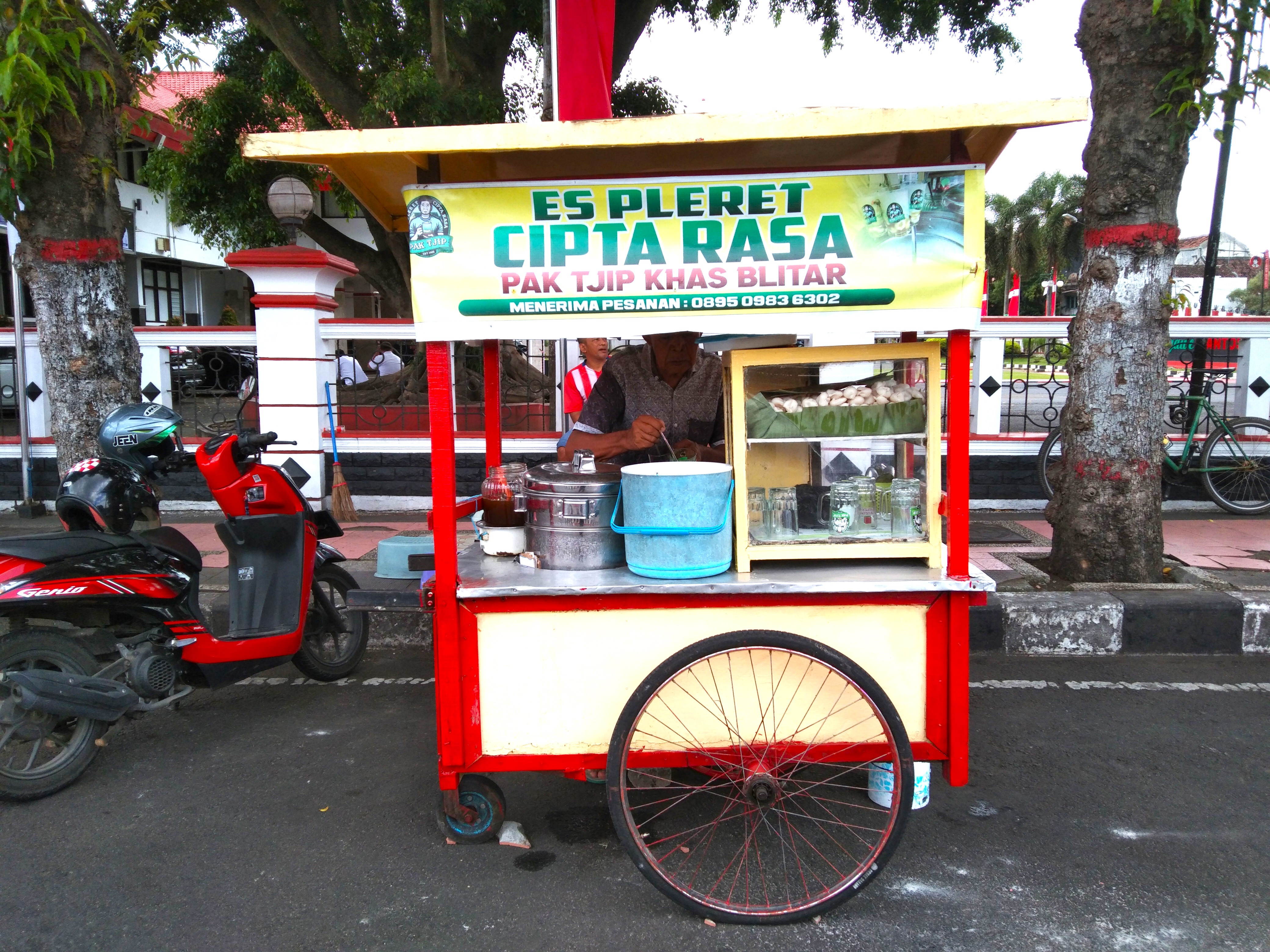
The Whisper Of Es Pleret : Blitar's Cool Embrace
Close your eyes and imagine Blitar in the summer of 1938. The sun hangs heavy over Jalan Merdeka, painting the streets gold, while the scent of frangipani drifts from temple courtyards. In this town, where young Soekarno once roamed dreaming of revolution, life moves to the rhythm of oxcarts and market calls. But on a dusty corner near the Alun-alun, a woman named Siti stirs something magical bowl of ice and sweetness that will become Blitar’s heartbeat; Es Pleret.
Siti is no ordinary vendor. With calloused hands and a twinkle in her eye, she’s spent years perfecting the art of pleret, those soft, chewy dumplings crafted from rice flour, each one hiding a molten core of palm sugar. In Blitar villages, pleret is a treat for festivals, nibbled under banyan trees. But Siti sees more. She dreams of cooling Blitar’s weary souls. So, she shaves a precious block of ice-carted from a far-off town-into a snowy mound, nestles her pleret atop I, and pours a river of creamy coconut milk and dark, glossy palm sugar syrup. The first bowl of Es Pleret sparkles in the sunlight, a jewel of refreshment in a parched world.
Word spreads like wildfire. By noon, children with bare feet and traders with straw hats crowd Siti’s gerobak pikul, their coins clinking for a taste. The first bite is a revelation: the ice chills your teeth, the coconut milk coats your tongue, and the peleret yields its sweet, warm secret. A boy laughs, syrup dripping down his chin. An old man sighs, remembering simple days. Siti’s stall becomes a sanctuary, where Blitar pauses to savor life’s small joys. “This,” she whispers to her daughter, “is how we hold people together”.
But history is unkind. The 1940s brought the Japanese occupation, and Blitar tightened its belt. Ice is a memory, sugar a luxury, and Siti’s still falters. Yet she refuses to let Es Pleret fade. With her daughter, she forages for palm sap in nearby villages, boils it into syrup over a woodfire, and trades rice for silver, but the love remains. In the evenings, as families gather to whisper of independence, Siti’s Es Pleret fuels their hope, a reminder that sweetness can survive even the bitterest times.
When freedom dawned in 1945, Blitar burst with pride, and Es Pleret became a celebration. By the 1950s, the Alun-alun is alive with vendors, but one name shines brightest: Mbok Sanun, a vendor whose nickname (“Mother Soap”) comes from her knack for selling soap on the side. Mbok Sabun’s Es Pleret is legendary. Her Pleret are so tender they seem to melt before you chew, her coconut milk so rich it feels like a hug, and her syrup so perfectly caramelized it sings of Blitar’s palm groves. Her stall, shaded by a tamarind tree, draws everyone- students skipping class, officials loosening their ties, even travelers stepping off trains to taste the myth.
Mbok Sabun is more than a cook, she’s a storyteller. As she ladies syrup, she spins tales of Blitar’s heroes; Soekarno’s fiery speeches, Supriyadi’s rebellion against the Japanese. Her customers linger, spoons scraping glass bowl, their laughter weaving a community. Es Pleret isn’t just food, she’d say, her eyes crinkling. “It’s our story, told in every bite”. Her children learn the craft, stirring vast amounts of coconut milk and shaping pleret by lantern light, ensuring the recipe lives on.
Decades pass, and Blitar grows. Motorbikes roar where oxcarts once plodded, and neon signs flicker along Jalan Merdeka. Yet Es Pleret endures, unchanging in its essence, in the 1980s, stalls like Es Pleret Simpang Tiga add modern flourishes- silvers of jackfruits, a sprinkle of red beans- but the heart remains: ice, ploret, coconut milk, syrup. Vendors now use electric ice shavers, and some serve Es Pleret in plastic cups for hurried commuters, but the magic is the same. For Rp5,000, you can still hold Blitars’ past in your hands.
Today, as you sit at a stall near Tugu Air (taman Pecut), a bowl of Es Pleret before you, the world slows. The ice glistens, the pleret glows like pearls, and the syrup pools like liquid amber. Each spoonful is a journey: to Siti’s first stall, to Mbok Sabun’s tamarind tree, to the Blitar that raised a nation. Around you, locals chat, spoons clink, and a vendor hums a dangdut tune. Es Pleret isn’t just a desert; it’s a love letter from Blitar, written in ice and sugar, signed by every hand that shaped its story.
So take a bite, feel the chill, and listen. Somewhere in the breeze, Siti and Mbok Sabun are smiling, their legacy cooing your day, one sweet spoonful at a time. #Blitar is a must-visit destination.

Tag: accomodation, architecture, architecturelovers, bicycle, bike, blitar, blitarkitesfestival, blitarstopover, colonialhistory, community, cooking, culinary, culture, culturelovers, cycling, dutch, ecotourism, escape, experience, explore, familytravelers, food, green, harvest, heartofjava, heritage, hiking, history, hospitality, humaninterestfotographer, indonesianculturaltourism, indonesianhistorytourism, indonesiantourism, istanagebang, javasuntoldhistory, jogjamalang, kampunggerabah, kampungjenang, kebonrojo, laboratorium, landscapefotographer, local, locallovers, localtea, malangjogja, nature, naturelovers, onedayescape, pauseinblitar, penatarantemple, plantations, serangbeach, slowtravel, slowtraveler, soekarno, soekarnomuseum, soekarnoroots, soekarnostomb, station, sumberuripimmerse, sumberuripmoreexclusifethanubudbali, takeabreak, tradition, traditional, traditionalfoods, traditionalmarket, train, travel, travelersfotographer, TUInetherlands, tukikreleases, untoldstory, village, visit
